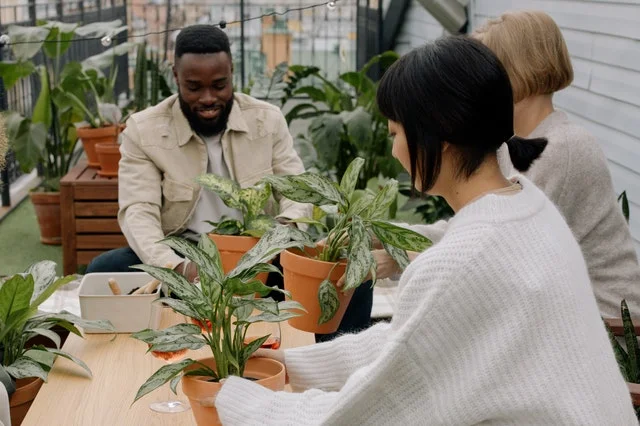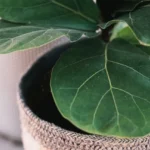Table of Contents
How to Care for Aglaonema Maria
Aglaonema Maria is one of the most popular indoor plants and it is often referred to as the Chinese evergreen plant. These plants are easy to care for which is one reason why they are so popular.
These plants are native to Asia and they can grow to between one and two feet in height and the same in width.
Aglaonema Maria is a slow growing plant and grows in a compact environment. These plants are colorful and vibrant with patterned leaves.
What Does Your Aglaonema Maria Require?
Light Requirements
These plants are perfect for almost any location, but they do not like direct sunlight. Full sunlight especially through glass can damage the plant and burn the leaves.
Aglaonema Maria plants can survive in areas with low light, however they will become leggy and thin.
The best light for these plants is a bright light that can be provide via indirect natural light or fluorescent lights.
With these plants the lighter the leaves the more light is required.
Temperature Requirements
Aglaonema Maria plants don’t like to be in draughty areas and they prefer to be in temperatures above eighteen degrees centigrade.
It is best to keep these plants away from vents and windows where the plant can get a sudden blast of cold air.
These plants will do better in spots that are warmer. The best temperature for these plants is between eighteen and twenty-four degrees centigrade.
Soil Requirements
The Aglaonema Maria plant is not fussy when it comes to the soil where it is. These plants will thrive in soil that is well drained with a slightly acidic level.
If the soil is retaining water, it may help to add some sand to the soil as this will assist drainage. These plants should be placed in pots that allow for a good amount of drainage.
Humidity Requirements
Aglaonema Maria plants need to have a high level of humidity and for this reason they are often thought to be best kept in a greenhouse. These plants will thrive in bright, warm, and humid areas indoor.
It is possible to increase the level of humidity that the plant is in and the plant should be sprayed with mist frequently.
These plants will do well when kept in indoor areas that are prone to high levels of humidity such as in the bathroom and kitchen.
If the indoor environment is dry it would be a good idea to use a humidifier near the plant. Another way to provide humidity for these plants is by using a pebble tray covered with water.
How to Water Aglaonema Maria
The Aglaonema Maria plants tend to thrive in moist condition but not in soils that are water logged, as this can cause them to rot. To ensure the plant maintains a good amount of water allow it to dry before adding more water.
This method of watering can be maintained through the spring and summer months. The amount of water required will reduce over the autumn and winter months.
Avoid letting the plant dry out completely as this will damage the plant. Moderation is the key when it comes to watering these plants.
How to Fertilise Aglaonema Maria
Aglaonema Maria plants will do well when they are fed with slow releasing fertiliser pellets or a liquid fertiliser.
It is best to give these plants fertiliser twice a year and this is best done in the spring and at the end of the growing season.
Extra Tips for Aglaonema Maria
Pests and Diseases
The Aglaonema Maria plant is not very susceptible to diseases and pests, but they can still be affected by the common problems of houseplants.
The pests that can affect these plants are scale, spider mites and mealybugs. There are a few problems that can affect these plants, and this includes root rot and stem rot. Plants that overwater and in poor light will be more at risk from rot.
The best way to treat these plants when they encounter a problem is to treat it with neem oil or insecticide. Most of the problems that affect these plants is due to fungal growth because of too much water.
Pruning
One of the good things about the Aglaonema Maria plant is that it doesn’t require any pruning. Avoid trying to prune this plant beyond removing the dead or dying leaves as this will damage the plant and, in some cases, could even kill the plant.
Propagation
Aglaonema Maria plants can be propagated by dividing the plant whilst repotting or using stem cuttings. When propagating from stem cuttings this is best done during the middle part of the summer when the temperatures are warmest. The best way to do this propagation is:
- Select the stem on the mother plant. It is best to use a stem that is at least a couple of inches long.
- Plant the cut stem into a separate pot using appropriate soil. It is a good idea to treat the soil with a rooting hormone.
- Ensure that the soil is kept moist. The cutting should start to root between three and four weeks.
FAQ
How Do You Care for Aglaonema Maria?
The placement for the Aglaonema Maria plant is the first important decision as they should not be placed in direct sunlight and they should not be placed in areas where there is a draft.
The plant should be fertilized a couple of times during the main growing season. Allow the plant to dry a bit between watering however avoid letting the plant dry out completely.
How Often Do You Water a Aglaonema Maria?
Aglaonema Maria requires water to keep it healthy but these plants can tolerate a low amount of water.
These plants can survive for a few weeks if you forget to add water, but it is best to add more water when the plant starts to dry out a bit.
Does Aglaonema Maria Need Sunlight?
Aglaonema Maria plants will thrive in low light levels to bright light levels. The plants with lighter leaves will require higher levels of light. It is important to avoid direct sunlight as this can damage the plant and scorch the leaves.
Are Aglaonema Maria Easy to Care For
Aglaonema Maria plants are very easy to look after and this is one of the reasons that these plants are popular for offices and home environments. One advantage of this plant is that they do not require a lot of attention and there is no need for them to be pruned.
What’s the Key Tips for Caring for a Aglaonema Maria?
These are very easy plant to look after and there are five main tips that you should bear in mind.
- Make sure that the plant is somewhere suitable. Avoid an area where the plant can get draughts.
- Do not put the plant near doors, windows, or air vents as it needs to be kept away from drafts.
- Fertilize the plant twice every year. Ensure that you water the plant from spring to autumn.
- Add water to the plant once the top two inches become dry.
- Ongoing basic care that is required is to wipe the leaves with a damp cloth to remove dirt and dust.
How Do I Make My Aglaonema Maria Bushy?
These are tricky plants to make bushy as care needs to be taken when pruning as over pruning can kill the plant.
The best thing to do is to give plenty of water but without over watering. Place the Aglaonema Maria in indirect sunlight.
Is Aglaonema Maria Air Purifier?
The Aglaonema Maria plant is a useful plant for cleaning and improving the quality of the air in the area where this plant is kept. This plant filters the toxins out of the environment around the plant.
Is Aglaonema Maria Toxic?
The Aglaonema Maria is a toxic plant for animals therefore if you have pets in the house then it might be an idea to avoid this plant or at least put it out of reach of your pet.
If a pet does come into contact with the plant, then you may need to seek veterinary attention straightaway.
What Should I Do with a Leggy Aglaonema Maria?
Aglaonema Maria plants can become leggy and this is usually accompanied with the loss of the lower leaves.
The best thing to do when this happens is to cut the plant above the node of the leave to promote new growth. It is best to cut the stem a couple of inches above the soil.
Why Are the Leaves of the Aglaonema Maria Turning Yellow?
The main reason that the leaves of the Aglaonema Maria plant will turn yellow is due to incorrect levels of watering. If you notice that a few leaves are turning yellow, check the level of moisture in the soil and adjust the watering schedule.
If you are watering the plant correctly, then check the level of copper as the plant may have a deficiency.
Why Does a Aglaonema Maria plant have dropping leaves
If the leaves of the Aglaonema Maria plant is dropping, then it may be having a problem with the amount of sunlight.
If the leaves on the plant are wilting and becoming curly, then the plant may need to be protected against the sunlight.


